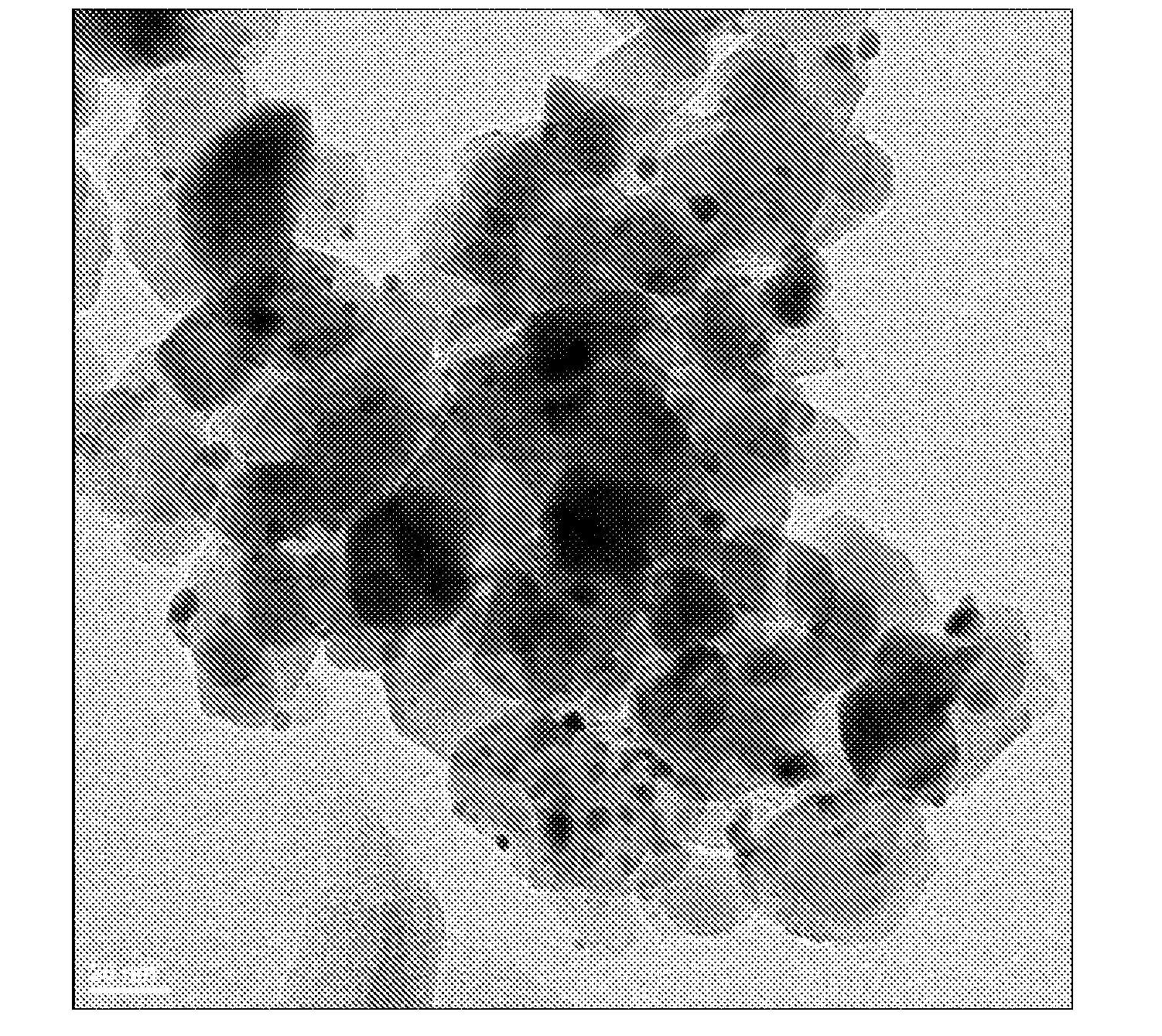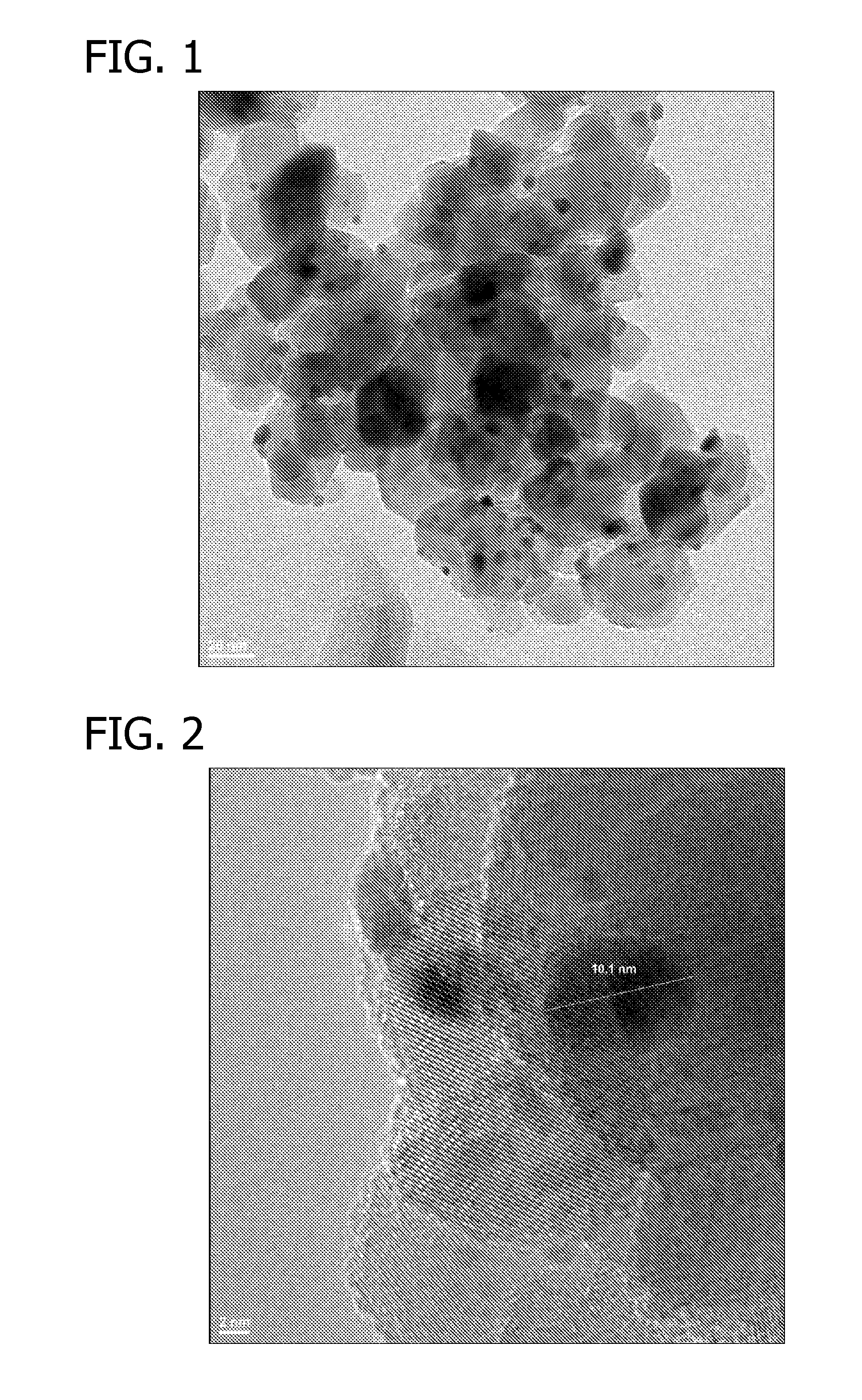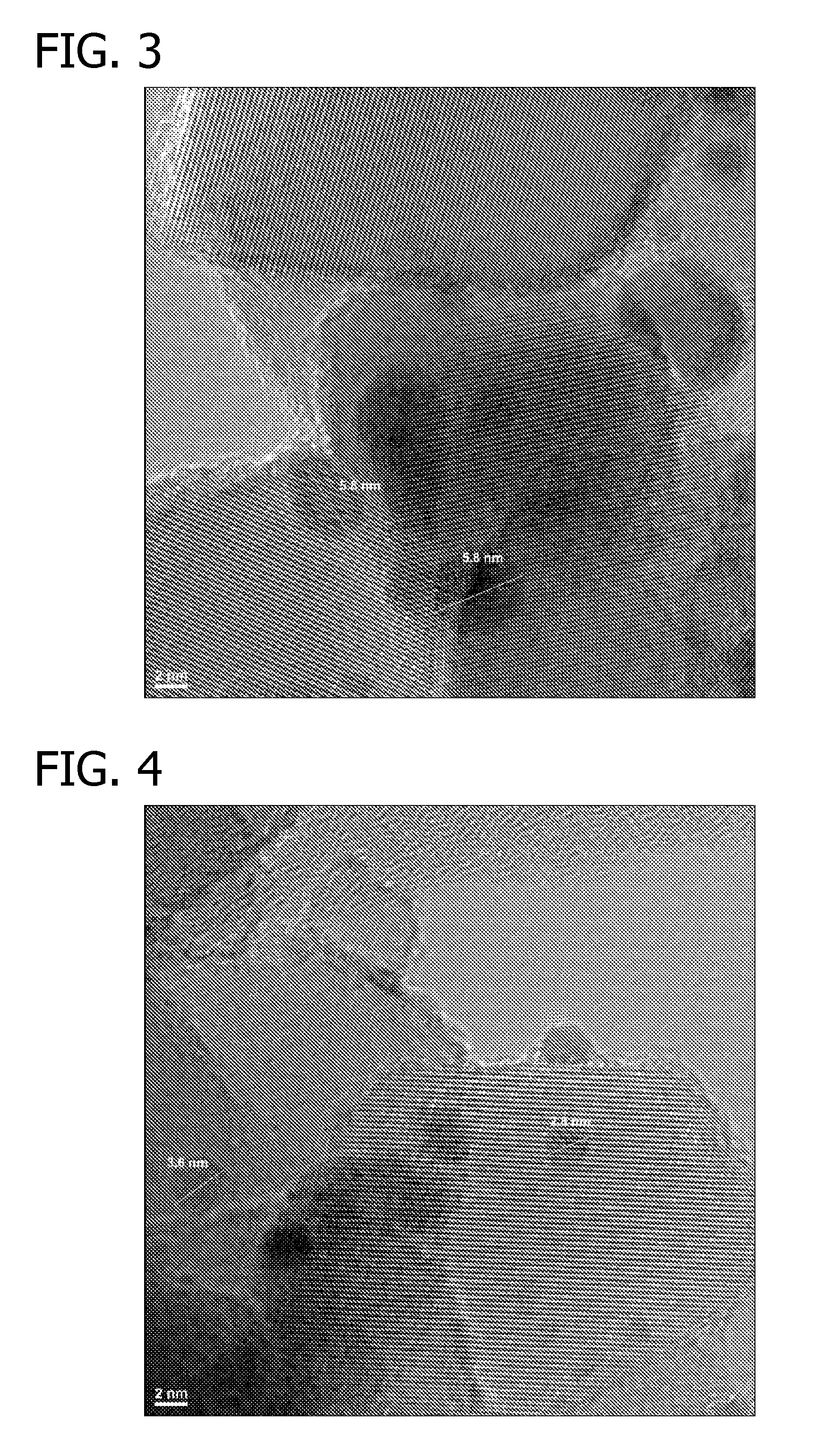Oxidation Catalysts
- Summary
- Abstract
- Description
- Claims
- Application Information
AI Technical Summary
Benefits of technology
Problems solved by technology
Method used
Image
Examples
example 1
[0065]Approximately 88 μl of an aqueous solution of HAuCl4 (containing 0.2254 wt % gold) was added to a suspension of 10 mg Titania P25 (Acros Organics) in deionized water (450 μl) while shaking. The suspension was shaken at room temperature for 30 min. 250 μl of an aqueous solution of NH4OH (4.0 M) was added to the above-mentioned suspension and the resulting suspension was shaken at room temperature for 2 hours. The resulting suspension was then centrifuged and supernatant was decanted. After residual liquid was removed using filter paper, the light yellow solid was dried in a 60° C. oven overnight under a dry air purge.
[0066]2.1 μl of an aqueous solution of Pt(NO3)2 (containing 7.7 wt % platinum) was added to the above solid and the mixture was agitated to impregnate the gold-containing support. The sample was dried in a 60° C. oven overnight under a dry air purge. The sample was then reduced at 350° C. under forming gas (5% H2 and 95% N2) atmosphere for 3 hours with 2° C. / min te...
example 2
[0069]88 μA of an aqueous solution of HAuCl4 (containing 0.2254 wt % gold) was added to a suspension of 10 mg titania (P25, Acros Organics) in deionized water (550 μA) while shaking. The suspension was shaken at room temperature for 30 min. 250 μl of an aqueous solution of NH4OH (4.0 M) was added to above suspension and the resulting suspension was shaken at room temperature for 2 hours. The suspension was then centrifuged and supernatant was decanted. After residual liquid was removed using filter paper, the light yellow solid was dried in a 60° C. oven overnight under a dry air purge.
[0070]Another batch of material was prepared by repeating above preparation with exception that after the light yellow solid was collected, it was washed with deionized water (2 times of 500 μl each) before it was dried in a 60° C. oven overnight under a dry air purge.
[0071]2.1 μl of an aqueous solution of Pt(NO3)2 (containing 7.7 wt % platinum) was added to the above solids and the mixtures were agit...
example 3
[0074]88 μl of an aqueous solution of HAuCl4 (containing 0.2254 wt % gold) was added to a suspension of 10 mg titania (P25, Acros Organics) in deionized water (1900 μl) while shaking. The suspension (at concentration of 5 mg support / ml) was shaken at room temperature for 30 min. 400 μl of an aqueous solution of urea (20 wt %) was added to above suspension and the resulting suspension was heated at 80° C. for 2 hours while shaking. The suspension was then cooled to room temperature, centrifuged and supernatant was decanted. After residual liquid was removed using filter paper, the light yellow solid was dried in a 60° C. oven overnight under a dry air purge.
[0075]Another batch of material was prepared by repeating above preparation with exception that after the light yellow solid was collected, it was washed with deionized water (2 times of 2000 μl each) before it was dried in a 60° C. oven overnight under a dry air purge.
[0076]2.1 μl of an aqueous solution of Pt(NO3)2 (containing 7....
PUM
| Property | Measurement | Unit |
|---|---|---|
| Temperature | aaaaa | aaaaa |
| Fraction | aaaaa | aaaaa |
| Size | aaaaa | aaaaa |
Abstract
Description
Claims
Application Information
 Login to View More
Login to View More - R&D
- Intellectual Property
- Life Sciences
- Materials
- Tech Scout
- Unparalleled Data Quality
- Higher Quality Content
- 60% Fewer Hallucinations
Browse by: Latest US Patents, China's latest patents, Technical Efficacy Thesaurus, Application Domain, Technology Topic, Popular Technical Reports.
© 2025 PatSnap. All rights reserved.Legal|Privacy policy|Modern Slavery Act Transparency Statement|Sitemap|About US| Contact US: help@patsnap.com



